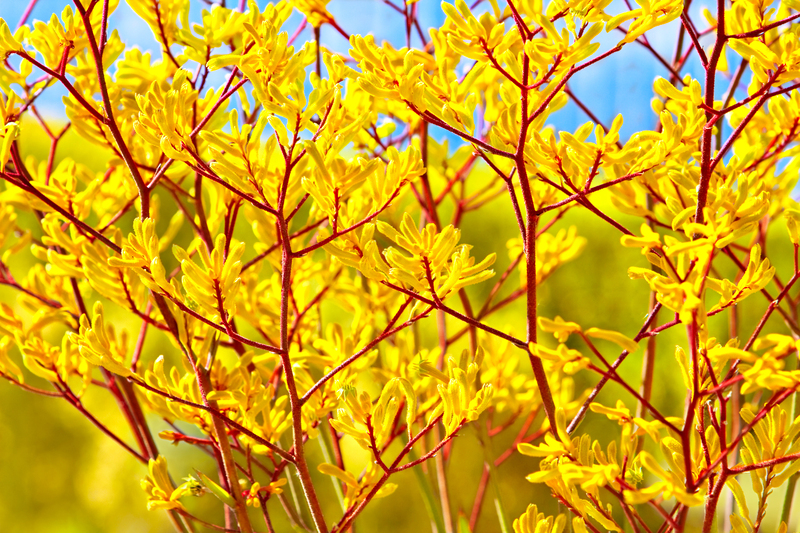Providing Winter Shelter: Ensuring Plant Health in Cold Months
Posted on 03/09/2025
Providing Winter Shelter: Ensuring Plant Health in Cold Months
Winter can be a challenging season for both avid gardeners and homeowners who care about their plant health. As temperatures drop, frost, snow, and harsh winds threaten both outdoor and indoor plants. Ensuring your plants survive--and even thrive--during the chillier months requires preparation, knowledge, and effective winter shelter strategies. In this comprehensive guide, we explore how to protect your plants and ensure their vitality with the right winterizing techniques.
Why Winter Shelter is Crucial for Plant Health
The cold months can put significant stress on your beloved garden. Many plants, especially non-native or tender varieties, are not adapted to freezing temperatures. Without adequate winter protection, you risk losing your favorite blooms, shrubs, or even mature trees.
- Frost damage can rupture plant cells and cause leaves, stems, and roots to die back.
- Repeated freeze and thaw cycles weaken root systems, making plants susceptible to diseases.
- Desiccating winds can strip moisture from leaves, causing winter burn or dieback.
- Heavy snow and ice may break branches and compact soil, restricting root growth come spring.
By providing winter shelter for your plants, you not only protect them from these elements but also encourage robust growth once warmth returns.

Assessing Your Plants' Cold-Hardiness
Before winter sets in, it's vital to know which plants in your landscape are vulnerable to cold injuries. Understanding cold hardiness zones and each plant's tolerance level guides your winter protection plan.
Check the USDA Plant Hardiness Zone
Determine your garden's hardiness zone using the USDA Plant Hardiness Zone Map. Plants rated for your zone are more likely to survive the cold with minimal care. Identify:
- Native and well-adapted species (require less shelter)
- Tender perennials and annuals (benefit from season-extending techniques)
- Young, newly planted shrubs or trees (need extra insulation)
Evaluate sun, wind exposure, and drainage in your garden, since sheltered microclimates can provide natural winter protection.
Preparing Outdoor Plants for Winter
Clean Up and Mulch
Late autumn is the perfect time to remove diseased foliage, spent flowers, and fallen fruit from your beds. Tidy beds are less likely to harbor pests and pathogens that can overwinter near your plants.
- Prune dead or damaged growth after dormancy begins.
- Apply a 2-4 inch layer of mulch (such as shredded bark or compost) around root zones, but not against trunks.
- Mulch insulates roots, conserves moisture, prevents soil erosion, and buffers temperature swings.
Proper Watering before Winter Sets In
Healthy, hydrated plants can handle cold stress better. Deeply water garden beds in late fall before the ground freezes to help plants enter dormancy in top condition.
- Avoid overwatering, as waterlogged soils can suffocate roots.
- Winter drought can cause evergreens to lose moisture--proper fall watering helps prevent winter burn.
Protecting Perennials and Roses
Some perennials benefit from extra mulch around their crowns. After the first hard frost:
- Cut back dried stems to a few inches above ground (unless they provide winter interest or habitat for wildlife).
- For tender perennials, consider lifting and storing indoors or covering with a thick mulch layer.
- Mound soil or compost over rose graft unions and wrap bush roses with burlap for extra insulation.
Winter Shelter Options for Sensitive Plants
Row Covers and Frost Blankets
Floating row covers or frost blankets made from spun-bonded fabric can add 4-8?F of freeze protection, extending your growing season. For extra cold, use multiple layers.
- Drape covers over stakes or hoops to prevent contact with foliage.
- Secure edges with rocks or stakes to keep out cold winds.
- Remove covers on sunny days to prevent overheating.
DIY Cloches and Cold Frames
Cloches--miniature greenhouses--can be as simple as upturned glass jars, milk jugs, or commercial plastic domes over vulnerable individual plants. For larger protection:
- Construct a cold frame with old windows and boards to shield beds of salad greens or tender starts.
- Cold frames trap solar heat during the day and buffer against nighttime lows.
Wrapping Trees and Shrubs
Young trees, evergreens, or broadleaf shrubs may suffer from sunscald, frost cracks, or animal browsing. Use:
- Commercial tree wrap, burlap, or horticultural fleece.
- Wrap trunks, especially of thin-barked trees like maples or fruit trees.
- Build a circular frame from stakes and wrap with burlap for larger shrubs.
_Tip: Remove wraps and covers in early spring to avoid moisture buildup or new growth damage._
Providing Shelter for Container Plants
Container plants are more exposed to freezing temperatures since roots above ground freeze more quickly. Effective winter sheltering is vital to prevent damage.
Move Pots to Sheltered Spots
- Move containers against south-facing walls or into unheated garages/sheds for better insulation.
- Group pots together and wrap them in bubble wrap or burlap to reduce heat loss.
- Elevate pots slightly off the ground to improve drainage and prevent freeze-thaw damage.
Overwintering Indoors
For tropical and frost-sensitive container plants:
- Transition them indoors before temperatures regularly dip below 45?F (7?C).
- Check for pests and prune as needed to fit smaller spaces.
- Place near bright windows and reduce watering; avoid drafty or hot dry spots.
Caring for Indoor Plants in Winter
Lower Light Levels & Adjust Watering
Shorter days and lower sun angle mean less light for your houseplants. Most plants slow their growth in winter and have different needs.
- Move light-loving plants closer to south or west facing windows.
- Rotate pots regularly for even growth.
- Use grow lights for supplemental lighting.
- Reduce watering--roots use less water in cooler temperatures and dim light.
Increase Humidity
Indoor heating can severely dry out air, leading to brown leaf tips or pest problems. To counteract this:
- Group plants together to create local humidity zones.
- Use pebble trays filled with water, or run a humidifier in the room.
- Mist foliage of humidity-loving plants like ferns or calatheas (only in the morning).
Protect from Drafts and Sudden Changes
Sudden cold drafts from windows and doors can shock sensitive houseplants.
- Avoid placing plants next to exterior doors or on windowsills during freezing nights.
- Keep plants away from heating vents or radiators, which cause drying stress.
Special Considerations: Evergreens, Fruit Trees, and Lawns
Evergreen Shrubs and Trees
- Water thoroughly before the ground freezes.
- Apply 3-4" of mulch over the root zone (do not mound mulch against trunks).
- Shield from wind with burlap or windbreak fencing if exposure is high.
- Inspect for snow build-up on branches; gently brush off to avoid breakage.
Fruit Trees
- Protect young trunks with tree wrap or paint with white latex to avoid sunscald and cracking.
- Prune only when trees are dormant and temperatures are mild.
- Keep mulch several inches away from trunk collars to prevent rot or rodent damage.
Lawns
- Rake up leaves and debris in late fall; matted leaves encourage disease.
- Provide a final, slightly lower mow before winter but do not scalp grass.
- Apply winterizing fertilizer if recommended for your turfgrass variety and region.
Winter Shelter for Vegetable Gardens
Extending the Harvest
Raised beds, hoop houses, and row covers protect late-season vegetables from early frosts.
- Carrots, beets, and parsnips can be insulated under a thick layer of mulch for late-winter harvests.
- Cold frames or low tunnels allow for fresh greens during mild winters.
Cover Crops and Soil Health
- Plant fall cover crops (like clover or winter rye) to prevent erosion and enrich soil health.
- Incorporate green manure crops in early spring for nutrient boost.
Common Mistakes to Avoid When Providing Winter Shelter
- Delaying Protection: Don't wait until a hard freeze is forecasted--early preparation is vital.
- Wrong Materials: Avoid using solid plastic covers directly on plants; they trap moisture and overheat quickly in the sun.
- Overmulching: Burying plant crowns with mulch can cause rot--always leave a gap around stems and trunks.
- Neglecting Removal: Remove shelters in early spring to prevent mold, pests, and stunted growth.

Frequently Asked Questions About Providing Winter Shelter for Plants
When should I start preparing my garden for winter?
Begin preparations before your first expected frost date. Carry out clean-up, pruning and mulching in late fall or as your growing season concludes.
Can I use leaves as mulch for winter protection?
Shredded leaves make excellent, eco-friendly mulch for perennial beds. Avoid thick layers of whole leaves, which can mat down and harbor mold or pests.
What plants need the most protection in winter?
Tender perennials, young trees, evergreens, container plants, and non-native varieties typically require the most robust winterizing strategies.
Conclusion: Preparing for Winter Secures Plant Health Year-Round
_Providing effective winter shelter is the best investment you can make for plant health and garden beauty._ By understanding your local climate, knowing your plants' tolerance, and using the right protective techniques, you can enjoy a vibrant, healthy garden through all seasons. Protecting plants during the cold months sets the stage for explosive spring growth and year-round rewards.
Whether you care for ornamental plants, productive vegetable patches, or houseplants, proactive measures not only preserve their beauty and yield but also save time and money otherwise spent on replacements. As you implement your winter shelter strategies, you ensure that your cherished green spaces remain resilient and flourishing whatever winter brings.
Ready your garden now--your plants will thank you when the first warmth returns!

